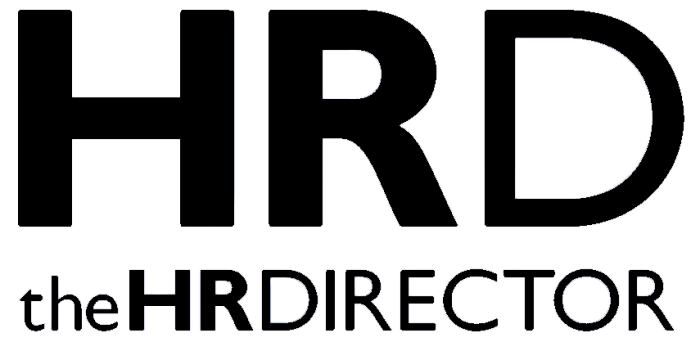We’ve all been there at some point. We’ve been putting in the work day in, day out – sometimes year in, year out. And yet, we don’t get included at the leadership table. But why? We’re going to explore five straightforward principles to help guide your actions and approach to set yourself up to be invited to your seat at the leadership table.
The Five Principles
- Get curious
- Lead with data
- Add value
- Be self-aware
- Build relationships
You might expect building relationships to come first on this list — and it’s certainly not because it’s less important. In fact, earning strong relationships is a key part of earning a seat at the leadership table. Everything else I’m about to cover ultimately supports and strengthens your ability to build those relationships and secure your place at the table.
I’ve worked in Talent Acquisition since 2008, and have led TA teams since 2012. For the large majority of my TA leadership career, I’ve reported directly to an HR leader or executive who’s not primarily focused on recruiting. This is fairly common for TA leaders, but an important distinction to make!
Early in my leadership career, I struggled with earning my seat at the leadership table. I was coached to “be more strategic” and “be data-driven” regularly. I struggled with implementing this feedback for longer than I care to admit – for years! Eventually, I moved into a different role at a new organisation, where I didn’t have all of the relationships and historical context. Where I previously relied on relationships to succeed (and in fact, I relied on even more than I realised), I quickly needed to take a different approach.
Here is what has worked for me:
1.Get Curious
Regardless of how strong your relationships are, or even, what field you’re in, getting curious will serve you marvellously.
Begin by asking yourself:
- What are my cross-functional partners frustrated about?
- What are my stakeholders not getting?
- What are my direct reports motivated by?
- What is my leadership team wanting to understand better?
- What challenges are my customers working through?
- Why do we do things this way?
Think about some of the best conversations you’ve had – personal or professional. Usually, those conversations were so positive because of a genuine interest and curiosity that the other person had in you and your work. Think about your favourite manager or coach – how do they approach conversations with you? I’d be willing to bet that they lead with questions and they’re curious.
2. Lead with Data
Now that we’re curious, it’s time to apply that curiosity to data. This part can admittedly be pretty daunting and overwhelming. Where to start, what am I looking for, what does it mean?
As a recovering perfectionist, getting started was the hardest part for me. This is where your curious mindset will be the bridge between getting started and getting a seat at the table. Whatever data is available to you as an HR practitioner or leader – employee retention, performance management completion, employee engagement, tenure, interview passthrough rates, time to fill, compa ratios – start looking through it. Think of yourself as a detective: look for patterns, anomalies, points of pride, or apparent areas for improvement.
I encourage you to let the data lead…before you draw conclusions.
Once you have identified some patterns or points of interest, dive in deeper! Are the patterns the same over periods of time? Are there any noticeable differences based on functional area or leader or geographic area?
Once you’ve explored and familiarised yourself with the data, bring it to your conversations. If this is an area that you’re new to or less comfortable with, keep it simple. Start by threading it into your regular (i.e. weekly or monthly) updates that already exist. As you become more comfortable, start to lead with data – include screenshots of tables, graphs, and/or summaries in your written communications. Not everything needs to be highly formalised. The idea here is to be data-informed in everything you do, which brings me to my next point.
3. Add Value
It’s become increasingly well-documented, better researched, and more widely discussed that adding value is key to earning a seat at the leadership table. This value-add can and should be to your organisation, your boss, and those around you.
Negotiations expert and leading professor, Alison Fragale, is the author of Likeable Badass: How Women Get The Success They Deserve. Allison’s book is a “a delightful blend of behavioural science and life hacks” in which she shares a story about an employee, Kate, who rises quickly through the ranks at her company. How? Kate managed how other people viewed her with the relentless goal of making leaders’ lives easier. Kate was always looking for ways to be helpful and would jump in to help without being asked. Eventually, she earned the reputation of problem-solver – and a seat at the leadership table along with it.
Full disclosure: Alison is a brilliant professor of mine, and I’d highly recommend giving her Likeable Badass book a read!
Through an HR-lense, one of the often overlooked ways to bring value is by leading with data and being known for being data-informed. The more you are familiar with the data, the more leaders and colleagues seek you out. This becomes a self-reinforcing circle. Even when you may not be especially data-informed on a particular topic, your habit of getting curious and letting the data lead will allow you to bring value to topic areas, conversations, and bigger decisions.
4. Be Self-Aware
As you’re working through opportunities to get curious, lead with data, and add value, it’s important to remember to maintain self-awareness. It’s critical to ask yourself:
- What is going on with the broader business or industry or macro environment that I’m participating in?
- Is now the right time to be bringing these questions up?
- Is this conversation going to help our business succeed?
- What other priorities do my boss and my counterparts have going on?
You may find after reflecting on questions like these that now isn’t the time to bring a creative idea or data set forward. In these moments, there are opportunities to thread your idea into the conversation, and proactively say that you’ll bring it back up to revisit next week or next month or next quarter. By doing this, you acknowledge that the work may be important, but you have awareness of others’ priorities and the bigger picture. This positions you as a team player who others want at the leadership table along with themselves.
5. Build Relationships
It can be easy to lose sight of the relationships in our daily work. There is a project, a deadline, or a major initiative that we get tunnel vision about, and we want our work on these things to succeed. Ultimately, the relationships we build along the way are equally determinant in our success.
The concept of a sponsor vs. a mentor has gained more traction in recent years. This is an important component of relationship-building. We should never stop learning and seeking out mentors from whom we can learn. The distinction with sponsors is that they are folks who have positions of power and influence in our organisation, and they already have a seat at the leadership table.
Adding value leads directly to building relationships with sponsors. These are people who will actively advocate for you and lead to your seat at the leadership table. As Gallup’s Kate Den Houter said, “No one climbs the corporate ladder alone.”
Closing Thoughts
As we’ve worked through these five principles, the goal is to weave each one into your day to day. These aren’t intended to be a checklist, but rather a mindset. It’s also an important reminder that earning a seat at the leadership table is not a title change nor promotion per se.
This is about showing up, learning, and contributing to impact and outcomes. As you operate from this place, the seat at the table is less and less about permission, and more about presence. This is where true leadership begins.







